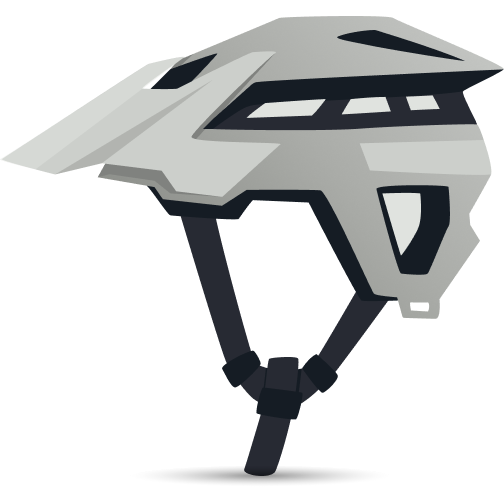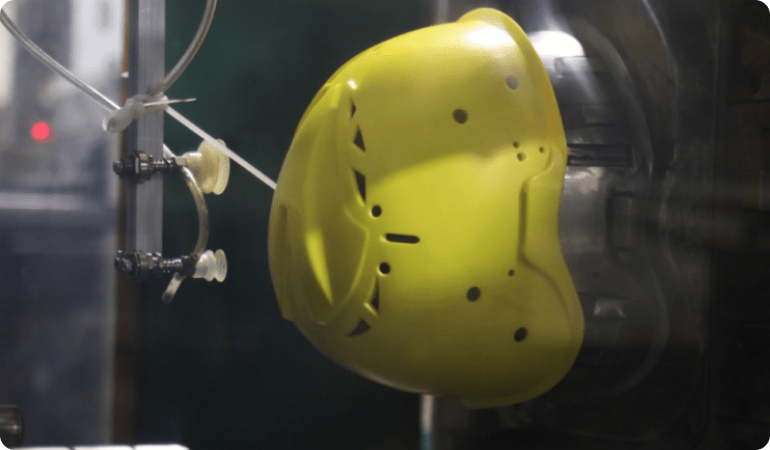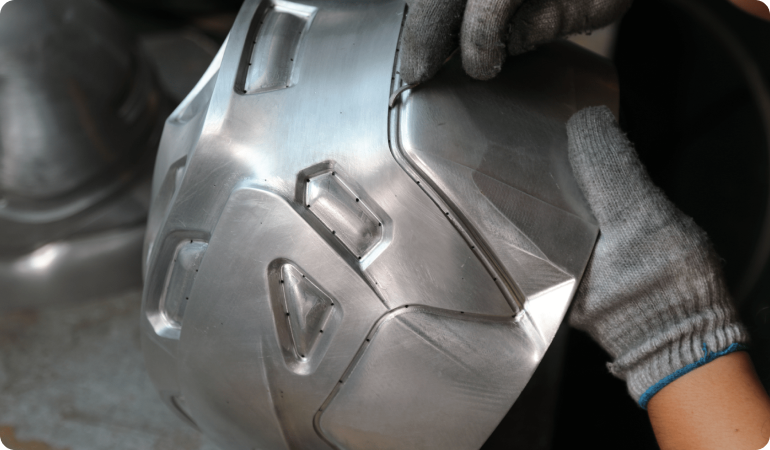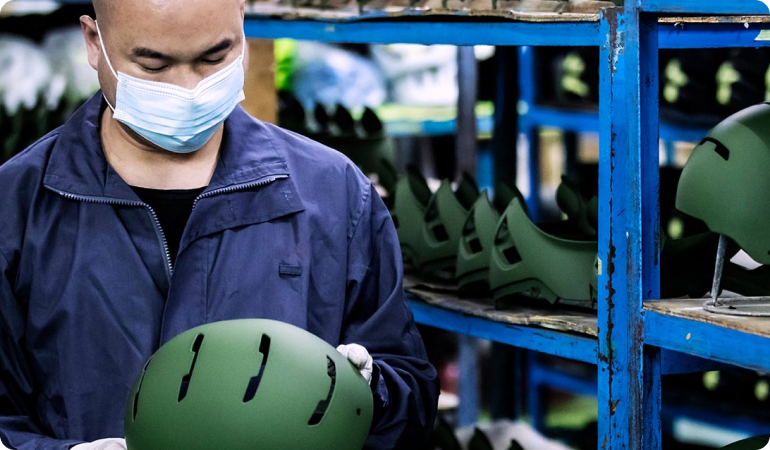Prototyping

Prototyping is the moment
your idea becomes something real.

It’s the bridge between design and tooling, where sketches turn into something physical—something you can hold, test, and improve.
But prototyping isn’t just about making a sample. It’s where engineering meets decision-making. It helps you understand if your design really works in the real world—not just on paper.
At this stage, you start to ask:
- Is the material too stiff, too soft, too heavy?
- Is the structure strong enough?
- Can it actually be produced with the tooling and methods we’re planning to use?
- Does it meet the performance standards your users expect?
This is your opportunity to answer those questions early—when changes are easier and less costly to make.
Why Prototyping is Essential

to product development
A common mistake in product development is waiting too long to build something real. But waiting increases risk. A prototype gives you something to test, react to, and refine—before investing in expensive molds, tooling, or large-scale production runs.
We believe in prototyping early and often, because it lets you:
- Catch problems before they become expensive – Every hour spent prototyping saves time and money in production.
- Make confident decisions – You’re not guessing—you’re testing and adjusting based on facts.
- Build smarter products – When form, fit, and function are evaluated in real conditions, you get better results.
- Engage your stakeholders – A working model helps you communicate your idea to partners, investors, or internal teams more effectively.

Why Prototyping Matters

Prototyping isn’t just a development step—it’s one of the most powerful tools you have to create a better product, faster and smarter. By building early and testing often, you’re not just saving time—you’re learning, adapting, and gaining the clarity needed to move forward with confidence.
Evaluate Technical
Feasibility

Lorem Ipsum is simply dummy text of the printing and typesetting industry. Lorem Ipsum has been the industry’s standard dummy text ever since the 1500s, when an unknown printer took a galley of type and scrambled it to make a type specimen book. It has survived not only five centuries, but also the leap into electronic typesetting, remaining essentially unchanged.
Simulate the
Final Product

Lorem Ipsum is simply dummy text of the printing and typesetting industry. Lorem Ipsum has been the industry’s standard dummy text ever since the 1500s, when an unknown printer took a galley of type and scrambled it to make a type specimen book. It has survived not only five centuries, but also the leap into electronic typesetting, remaining essentially unchanged.
Catch and Reduce
Risk Early

Lorem Ipsum is simply dummy text of the printing and typesetting industry. Lorem Ipsum has been the industry’s standard dummy text ever since the 1500s, when an unknown printer took a galley of type and scrambled it to make a type specimen book. It has survived not only five centuries, but also the leap into electronic typesetting, remaining essentially unchanged.
Iterate at
Lower Costs

Lorem Ipsum is simply dummy text of the printing and typesetting industry. Lorem Ipsum has been the industry’s standard dummy text ever since the 1500s, when an unknown printer took a galley of type and scrambled it to make a type specimen book. It has survived not only five centuries, but also the leap into electronic typesetting, remaining essentially unchanged.
Evaluate Technical
Feasibility

Lorem Ipsum is simply dummy text of the printing and typesetting industry. Lorem Ipsum has been the industry’s standard dummy text ever since the 1500s, when an unknown printer took a galley of type and scrambled it to make a type specimen book. It has survived not only five centuries, but also the leap into electronic typesetting, remaining essentially unchanged.
Prototyping

Prototyping is the moment your vision takes its first breath. It’s when your idea—once just lines on a sketch or thoughts in your head—becomes something real you can touch, test, and believe in.
But it’s more than just making a sample. It’s where creativity meets practicality, where questions start getting answers. Does it work? How does it feel? What needs to change? This is where you begin to see your product not just as an idea, but as something that could truly exist in the world.
Some manufacturers rush into creating something that looks and functions like the final version right away. While that might seem efficient, it often backfires—especially with new or complex products. Starting with a simple proof of concept can be far more valuable. It helps validate core ideas early on, reduces risk, and keeps the development process moving with clarity and speed.
There’s no one-size-fits-all method. Sometimes a quick, rough build is exactly what’s needed to explore a function or test a design detail. Other times, a polished prototype helps bring the full vision to life. The key is knowing which step makes sense for the stage you’re in—and staying open to learning along the way.

Type of Prototype we offer

Appearance Prototyping
Lorem ipsum dolor sit amet, consectetur adipiscing elit. Ut elit tellus, luctus nec ullamcorper mattis, pulvinar dapibus leo.
Structural Prototyping
Lorem ipsum dolor sit amet, consectetur adipiscing elit. Ut elit tellus, luctus nec ullamcorper mattis, pulvinar dapibus leo.
Final Prototyping
Lorem ipsum dolor sit amet, consectetur adipiscing elit. Ut elit tellus, luctus nec ullamcorper mattis, pulvinar dapibus leo.
Let's bring your project to life!
Our team of engineers is here to help. We offer free consultations and estimates.
Fill out the form for your free cost estimate.
Our product guaranteed quality, compliance with regulations
There are more than 300 brand factories with employees and more than 50,000 square meters of factory buildings. All products are tested in accordance with product standards and testing protocols before all product development, processing, and shipment.

We focus on helmet safety with performance

